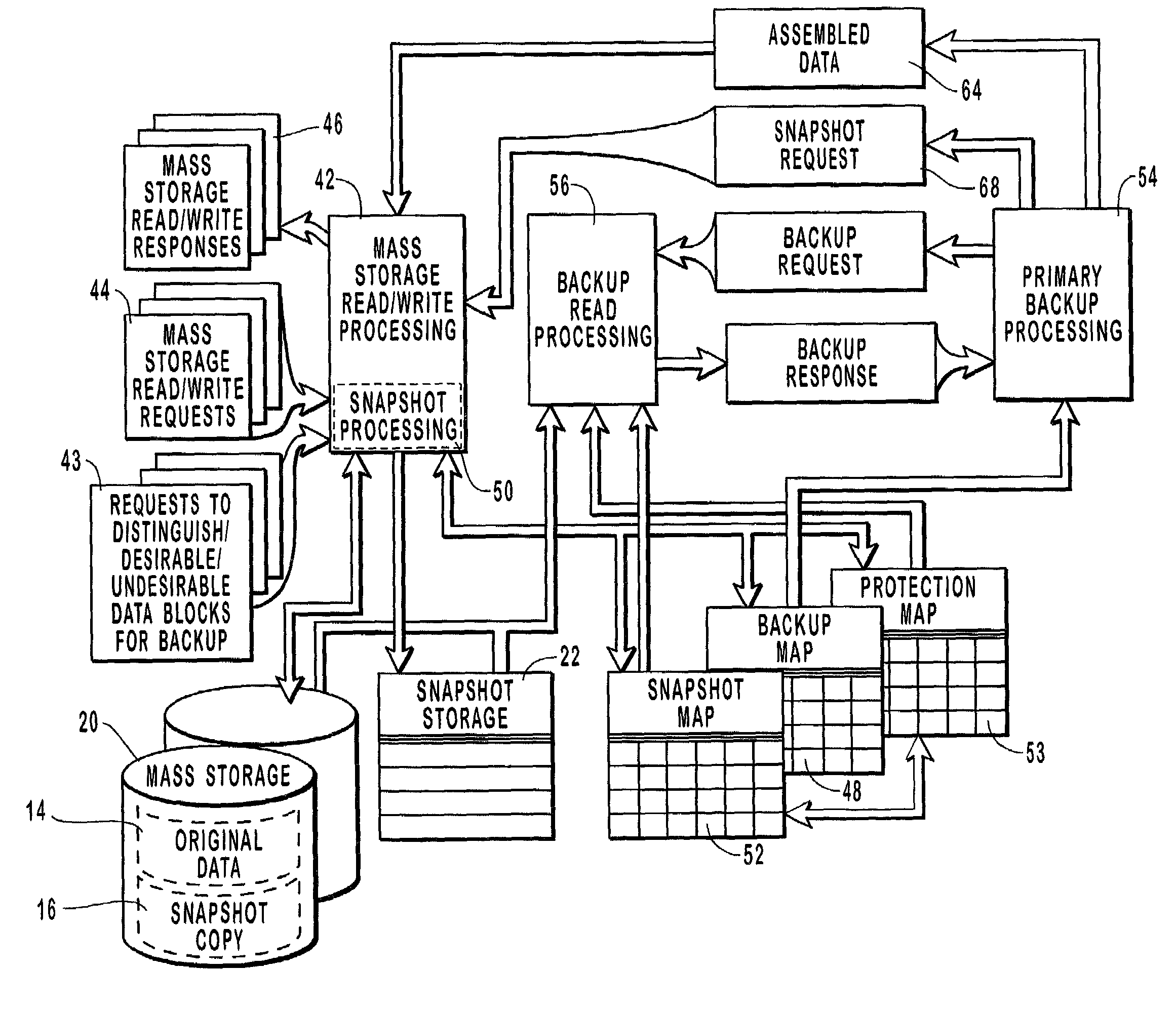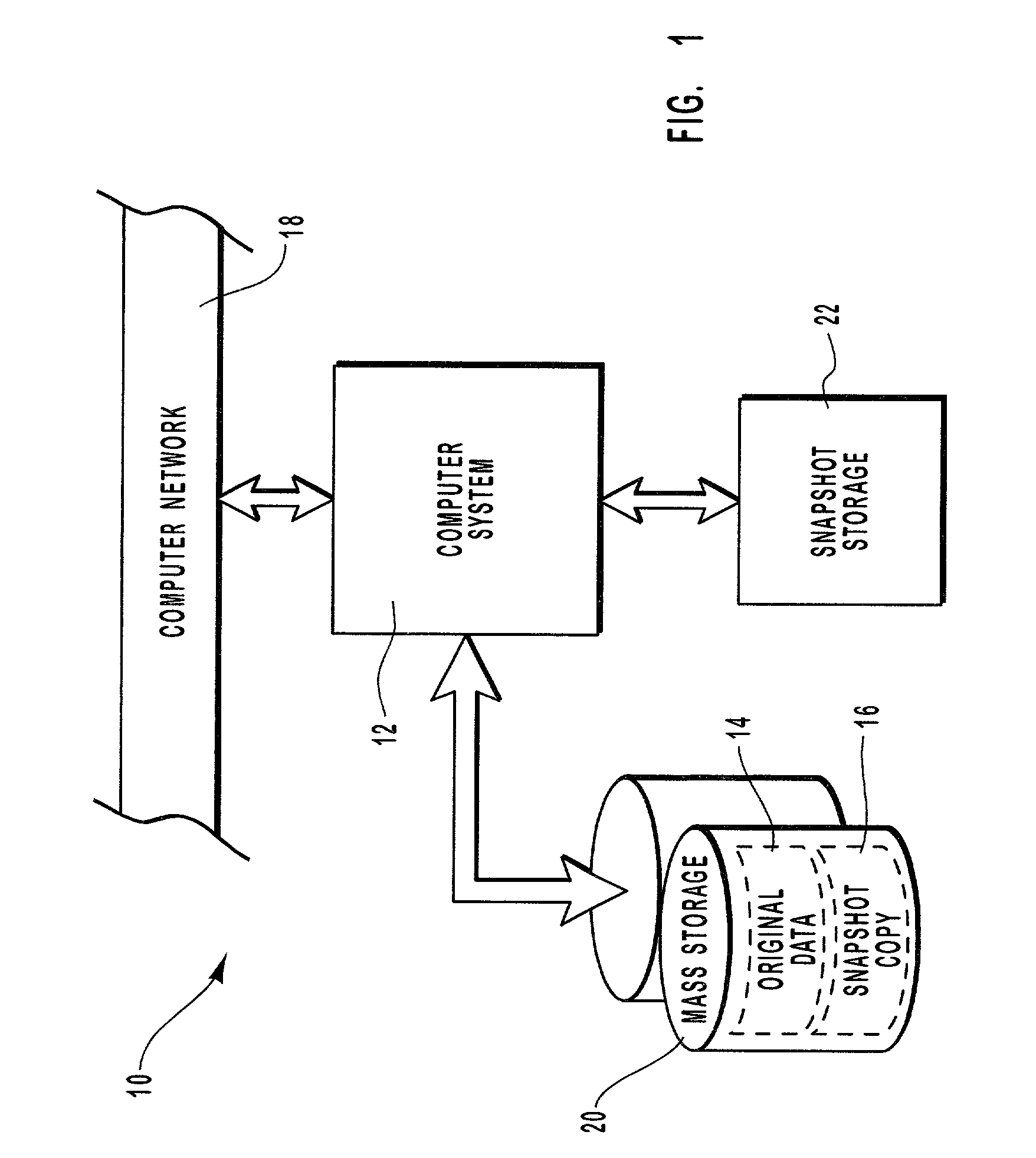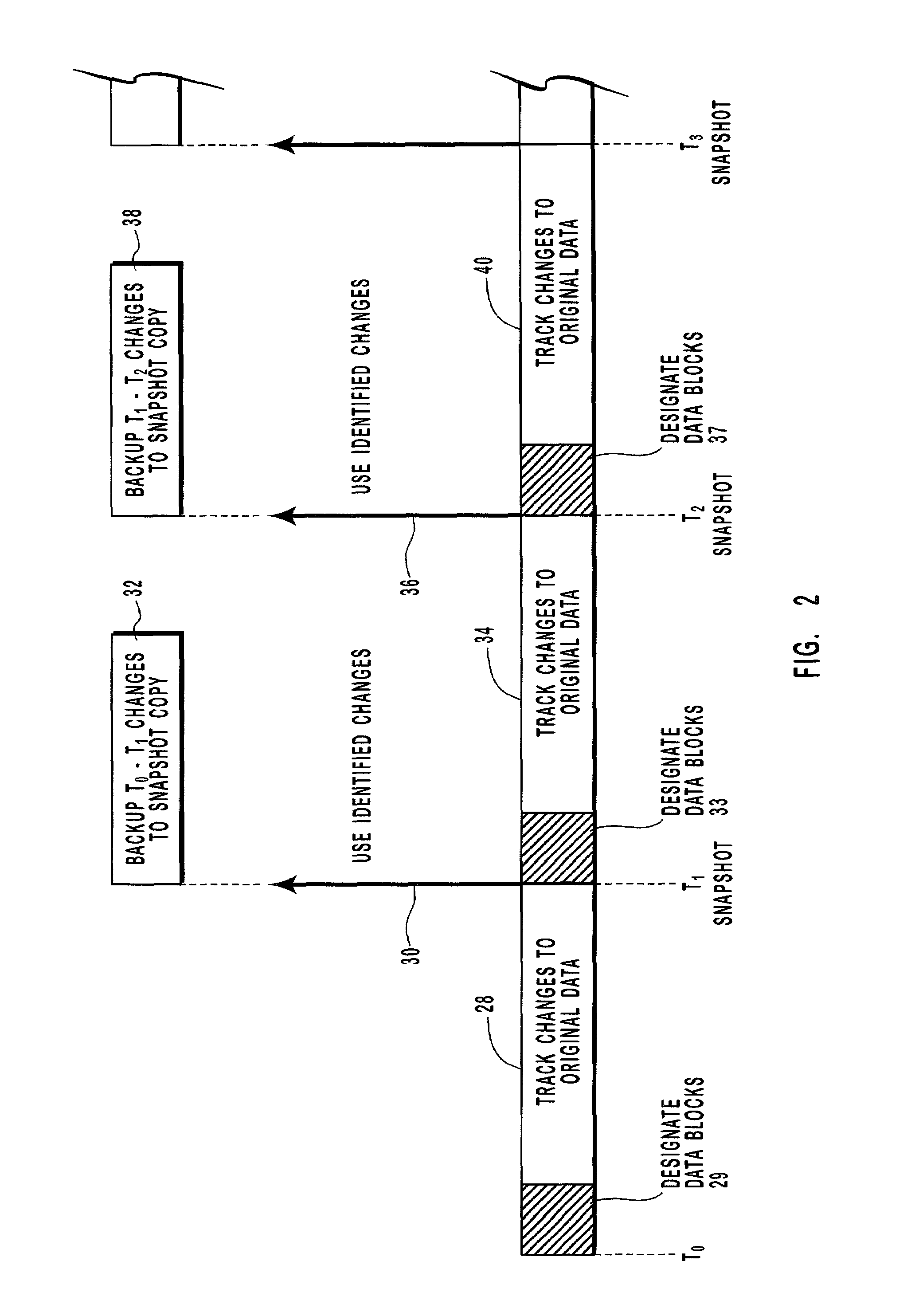Preserving a snapshot of selected data of a mass storage system
a mass storage system and snapshot technology, applied in the field of computer data protection, can solve the problems of unworkable solutions, waste of processing cycles, and inability to conduct business operations, and achieve the effects of reducing the amount of data needed, avoiding waste of storage space, and maximizing storage spa
- Summary
- Abstract
- Description
- Claims
- Application Information
AI Technical Summary
Benefits of technology
Problems solved by technology
Method used
Image
Examples
Embodiment Construction
[0026]The present invention extends to both systems and methods for taking a snapshot of only those data sectors that are desirable to be backed up from a mass storage means, rather than taking a snapshot of all the data in that mass storage means. Since a snapshot is taken of only the desirable data, this invention optimizes both time and storage space in providing a back up copy of data located on a mass storage means.
[0027]The invention is described by using diagrams to illustrate either the structure or the processing of certain embodiments to implement the systems and methods of the present invention. Using the diagrams in this manner to present the invention should not be construed as limiting of its scope. The present invention can be practiced with general purpose or special purpose computers and all such computer systems should be included within its scope.
[0028]Embodiments within the scope of the present invention also include computer-readable media having encoded therein...
PUM
 Login to View More
Login to View More Abstract
Description
Claims
Application Information
 Login to View More
Login to View More - R&D
- Intellectual Property
- Life Sciences
- Materials
- Tech Scout
- Unparalleled Data Quality
- Higher Quality Content
- 60% Fewer Hallucinations
Browse by: Latest US Patents, China's latest patents, Technical Efficacy Thesaurus, Application Domain, Technology Topic, Popular Technical Reports.
© 2025 PatSnap. All rights reserved.Legal|Privacy policy|Modern Slavery Act Transparency Statement|Sitemap|About US| Contact US: help@patsnap.com



